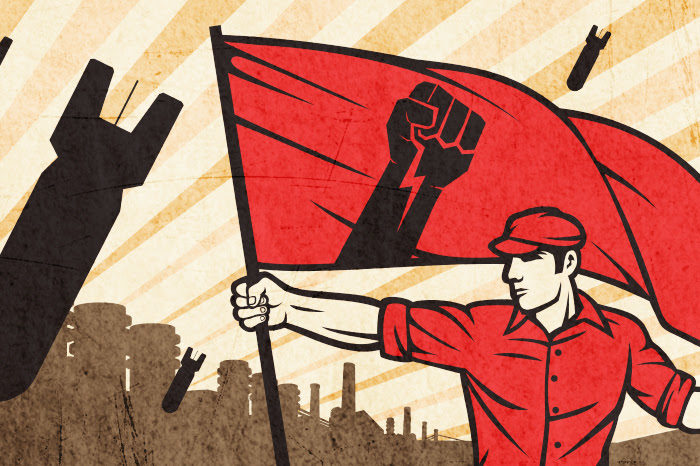How Government Lost 15 Million Acres of Public Land in the United States

Non-market allocations of resources are doomed to result in catastrophic waste and mismanagement, evidenced by a recent New York Times story exploring how ‘millions of acres of public lands aren’t really open to the public.’
Leave it to the United States Government to lose track of almost three states worth of public land. Only an institution with so little incentive and ability to allocate resources for the betterment of human wellbeing could instantiate such a catastrophic waste of potential.
The following is a story of an engineer named Eric Siegfried, a Montana man who caught public officials in almost unimaginable levels of incompetence and waste. It is also a cautionary tale about the way extreme misallocations of resources are the predictable outcome of America’s current form of land use governance, which systematically severs control over certain resources from anyone equipped to use them rationally and effectively.
The Engineer Who Caught the Government’s Mistake
Multiple articles in the New York Times have recently reported on the findings of a group of private hunters and wilderness enthusiasts who have brought attention to millions of acres that nobody previously knew existed. A Times article published in February reported that, “Across America, 15 million acres of state and federal land is surrounded by private land, with no legal entry by road or trail. If this so-called landlocked land was one contiguous piece, it would form the largest national park in the country, nearly the size of Vermont, New Hampshire and Connecticut combined.” And, “Most of these inaccessible public lands are in the West, and, until recently, their existence was largely unknown.”
The land was only discovered, according to another recent Times article, because of a smartphone app called OnX. “OnX was born when Eric Siegfried, a mechanical engineer and part-time hunting guide in Montana, decided to make a Google Maps for the wilderness,” the Times reports.
Unlike Google maps, OnX is optimized for use in forests and other wild areas, displaying property lines, wind patterns, fire histories, and other data useful to outdoorsmen but not to ordinary civilians.
Times contributor Ben Ryder Howe writes, “Property data is often inaccurate and outdated, and early in the development of OnX Mr. Siegfried found himself asking, ‘Why is there no nationwide picture of land ownership, of public and private property boundaries, of who owns what?’” And so, according to Howe, “By collating state and county data and putting it on a microchip, Mr. Siegfried turned the project in the scrapbooking room into a company that just received more than $87 million from investors and that understands the American landscape arguably better than the government does.”
The Importance of Efficient Land Use
Howe points out that, “In answering the question of who owns what, OnX helped bring to light how much public land — often highly coveted — is not reachable by the public.”
Land is highly coveted because it is a form of capital which, if allocated properly, can vastly enrich its owners and other participants in the market.
There are countless ways that individuals, or society generally, could utilize 15 million acres of land. People could live on it, thus increasing housing affordability and expanding the range of available options of where to live. People could convert its raw materials into transportable resources such as lumber or oil, thus improving commodity abundance and lowering the threshold at which the poor could afford to have their needs met. People could employ unique characteristics of its ecosystems to conduct scientific research. Or the land could be preserved in its current state, if its environmental, recreational, and/or aesthetic properties are deemed more valuable. Manifold possible uses exist, many of which can probably only be imagined by the innovators of the future.
It is impossible to know a priori which combination of potential uses are the best allocation of such an enormous supply of capital. But one thing is clear: When so much wealth and potential are on the line, the difference between efficient and inefficient resource allocation is the difference between countless livelihoods saved or destroyed. When housing prices, or food prices, or gas prices, are increased or decreased by the availability or unavailability of a few million acres worth of resources, it can make or break the health and safety of anyone whose current standards of living are near the margin of viability. And even for those well enough above the margin to be unconcerned about basic necessities, changes in the cost of living can still make or break their access to important commodities and opportunities such as a higher education, the ability to start a small business, or any other ambition they might have that requires significant investment.
So how could such a massive amount of potential wealth have been unaccounted for and untapped for so long, and what should happen to it now that it has been discovered?
Prices versus Pricelessness
It is commonly understood, even by avowed socialists as well as arguably Karl Marx himself, that socialist economies are generally less conducive to economic growth than market economies, hence the latter often being dubbed “capitalist.” One primary reason for this is that markets result in a mechanism of resource allocation that maximizes efficiency like no socialist, communist, or fascist economy has ever been capable of. And that mechanism is known as the price system.
The price system is merely the logical consequence of resources being controlled by individuals rather than collectives, and exchanged voluntarily rather than by force. These are the characteristics of a market economy, and they result in consumers and producers having extremely precise knowledge, communicated via prices, of exactly how useful each resource is for a wide range of potential uses, given the nature and scarcity of the resource relative to alternatives. And this precise knowledge allows budgeting, financing, shopping for the best among many available products, and so on to be subject to highly accurate calculations.
This crucial difference between market and non-market economies was first clearly articulated by the economist Ludwig von Mises in his 1920 essay, “Economic Calculation in the Socialist Commonwealth.” In it, Mises offered the following example:
“Picture the building of a new railroad. Should it be built at all, and if so, which out of a number of conceivable roads should be built? In a competitive and monetary economy, this question would be answered by monetary calculation. The new road will render less expensive the transport of some goods, and it may be possible to calculate whether this reduction of expense transcends that involved in the building and upkeep of the next line. That can only be calculated in money. It is not possible to attain the desired end merely by counterbalancing the various physical expenses and physical savings. Where one cannot express hours of labor, iron, coal, all kinds of building material, machines and other things necessary for the construction and upkeep of the railroad in a common unit it is not possible to make calculations at all.”
This point was expanded on by Mises’s disciple, the Nobel Prize winning economist Friedrich Hayek, who gives another instructive example in his seminal 1945 essay “The Use of Knowledge in Society”:
“Assume that somewhere in the world a new opportunity for the use of some raw material, say, tin, has arisen, or that one of the sources of supply of tin has been eliminated. … All that the users of tin need to know is that some of the tin they used to consume is now more profitably employed elsewhere and that, in consequence, they must economize tin. There is no need for the great majority of them even to know where the more urgent need has arisen, or in favor of what other needs they ought to husband the supply. If only some of them know directly of the new demand, and switch resources over to it, and if the people who are aware of the new gap thus created in turn fill it from still other sources, the effect will rapidly spread throughout the whole economic system and influence not only all the uses of tin but also those of its substitutes and the substitutes of these substitutes, the supply of all the things made of tin, and their substitutes, and so on; and all this without the great majority of those instrumental in bringing about these substitutions knowing anything at all about the original cause of these changes.”
Public versus Private Ownership
Now think of the price system, or lack of one, in the context of Siegfried’s discovery.
When land is privately owned, the price system facilitates numerical comparisons between different possible uses of each plot of land (or useful subdivision thereof), such as people living on it, or excavating it for minerals, or growing crops on it, or conserving its current state—or countless other possibilities.
There is no way of knowing with certainty which is the best use of each plot of land, given the virtually infinite variables such as what alternative resources could be used for each of the possible uses of the land, how scarce and applicable to alternate uses each of those resources are, and so on. And of course, even the price system can’t account for all the variables, given that every event in the world comes with externalities, millions of uncertainties and butterfly effects that constantly shape our perception of the future into reality. But the price system accounts for more of the variables, and does so with more accuracy, than any other system because prices reflect each individual’s specific preferences and needs down to the cent whereas all other systems reflect either randomness or the preferences of some authoritarian subset of the population that has managed to dictate resource allocations according to their preferences while excluding the preferences of others.
(It is worth noting that the assumptions people make about the relative significance of one set of externalities over another tend to be totally unjustified. For example, there is a common assumption that the negative environmental externalities of industrial development such as logging or oil drilling outweigh the positive economic externalities. But it can just as easily be the case that when commodity prices are reduced by such supply increases, the resulting poverty alleviation and wealth creation generates positive externalities, such as more education and technological and scientific research, that outweigh the negative externalities.)
Private land is more likely than land governed any other way to be used for its optimal purpose, because its owner is free to sell it to the highest bidder, and the bidder with the most valuable idea of how to use it will typically be willing to pay the most for it. By contrast, “public” land is doomed to be allocated comparatively suboptimally. Because no individual is free to sell it to the highest bidder, it is instead trapped in its current use by whatever regulatory mire is preventing individuals from optimizing it.
Only in such a mire could the 15 million acres discovered by Eric Siegfried have been so tragically wasted. Individual property owners would almost certainly be too aware of their major assets to lose track of 15 million acres of real estate, because they themselves would be the ones to reap the rewards or punishments of the quality of their capital allocation choices.
Those acres, being “public” and thus illegal for individuals to settle, develop, or cultivate, were of so little use to anyone that nobody even bothered to do the basic research or exploration required to learn of their existence before it was discovered by accident. And all while there are millions of people without basic necessities, such as a peaceful place to sleep or grow food.
This arbitrary and incompetent allocation of 15 million acres should come as no surprise given the economics of public versus private ownership that have been well understood in the context of socialism and capitalism for more than a century. To solve the problem of rampant resource misallocation, the resources should be privatized so that individuals can start freely investing and innovating to make the most out of that which may otherwise be worthless enough to have abandoned completely.
AUTHOR
Saul Zimet
Saul Zimet is a Website and Data Coordinator for HumanProgress.org at the Cato Institute and a graduate student in economics at the John Jay College of Criminal Justice at the City University of New York.
RELATED ARTICLE: White House Spending $130,000 Per Day To Store Trump’s Border Wall Materials
EDITORS NOTE: This FEE column is republished with permission. ©All rights reserved.




 Anthem says his father taught him “above all else” that true freedom can only be achieved once the world experiences a Hayekian choice in currency that technologies like bitcoin, HayekGold, and other virtual assets are wonderfully making a rapidly growing reality. I know Pop would be the most excited person in the world about all of these new technology developments enabling Austrian economics to flourish in a modern digital society.
Anthem says his father taught him “above all else” that true freedom can only be achieved once the world experiences a Hayekian choice in currency that technologies like bitcoin, HayekGold, and other virtual assets are wonderfully making a rapidly growing reality. I know Pop would be the most excited person in the world about all of these new technology developments enabling Austrian economics to flourish in a modern digital society.


